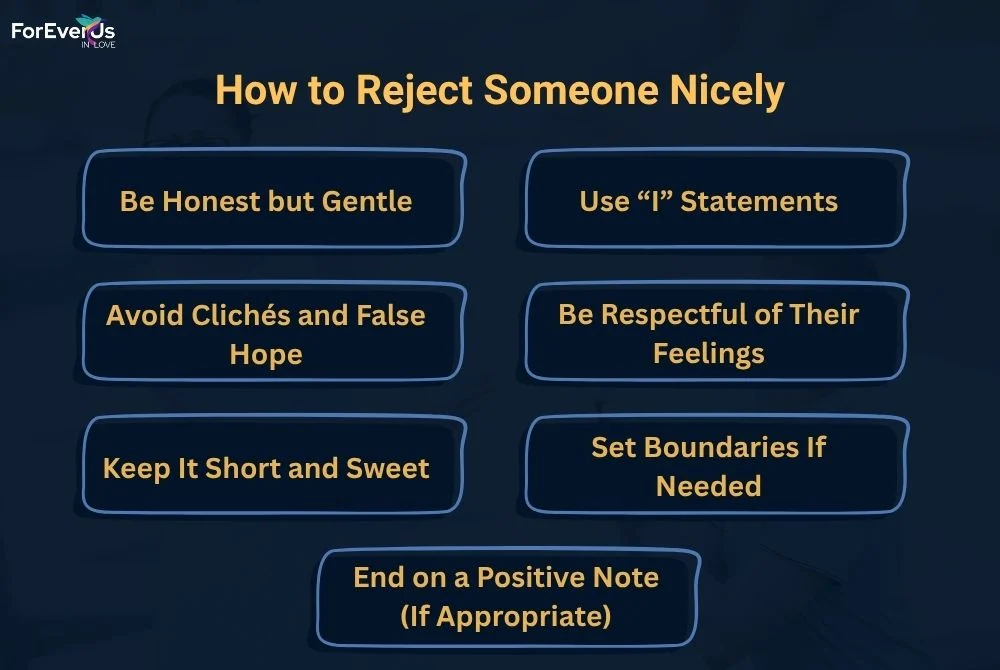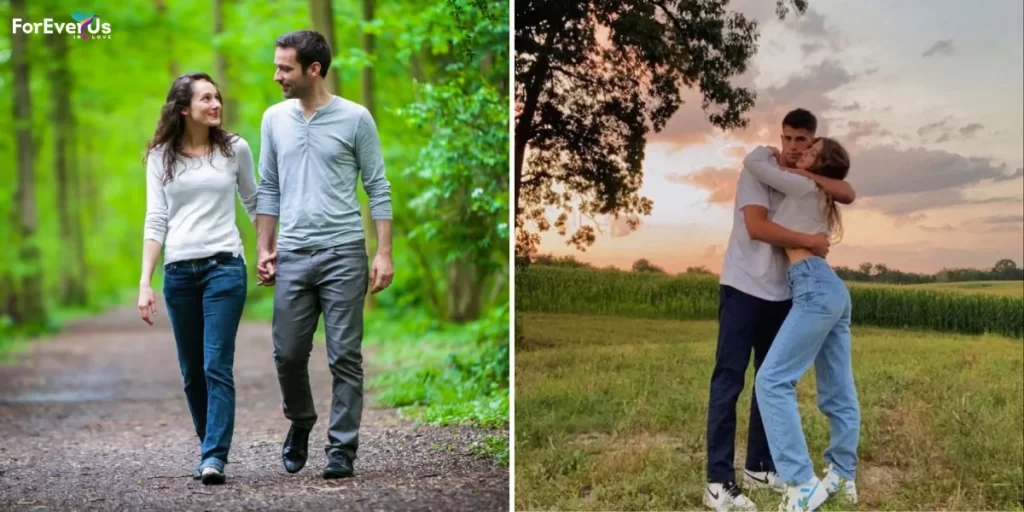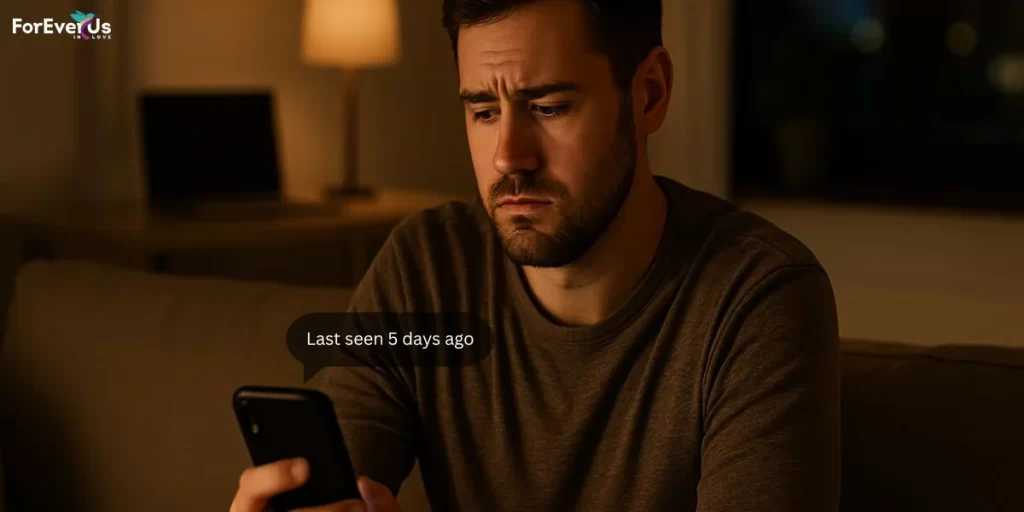Rejecting someone isn’t easy. Whether it’s a first date, a friend who’s hoping for more, or someone you just don’t see a future with, telling them “no” can feel like walking a tightrope. You want to be honest without being harsh, kind without being misleading — and most of all, you want to avoid hurting their feelings.
We’ve all been there — that awkward moment when someone expresses interest and you know the answer in your gut. Your heart races, your mind scrambles, and all you want is to say the right thing without causing pain.
If you’ve ever found yourself wondering how to reject someone nicely without causing unnecessary pain or confusion, you’re not alone. Rejection is difficult for both people involved, and knowing how to handle it with care makes all the difference. It’s one of the most delicate moments in dating, but done right, it can foster respect, preserve dignity, and maybe even lead to a healthy friendship down the road.
In this guide, you’ll learn how to protect both your feelings and theirs as I walk you through proven tips to gently say no, what to say and what to avoid, how to handle tricky reactions, and even how to manage your own emotions afterward. By the end, you’ll have the confidence to reject kindly — because kindness matters, even when you’re turning someone down.
Why Being Kind When Rejecting Matters More Than You Think
Here’s the truth: rejection will sting, but how you deliver it can soften the blow. Being kind doesn’t mean sugarcoating or leading someone on — it means showing empathy and respect for their feelings.
Why is this important?
- It preserves their dignity. Everyone deserves to be treated with respect, even when the answer is no.
- It keeps communication clear and honest. Kindness paired with clarity prevents misunderstandings.
- It maintains your own integrity. Being gentle aligns with your values and fosters goodwill.
- It might even leave the door open for friendship or future connections. Yes, sometimes “no” today doesn’t mean “no forever.”
Have you ever felt tongue-tied when trying to say no? That’s normal — but when you approach rejection with kindness, you’re not just protecting their feelings — you’re practicing emotional intelligence that benefits everyone.
When Should You Reject Someone In Person vs. Over Text?
One of the most common questions I get is: Should I reject them in person or over text?
Here’s a simple guideline to help you decide:
In Person: Best for people you’ve been seeing regularly or have built some emotional connection with. This shows respect and allows for honest, direct communication.
Over Text: Okay for early-stage dating or if meeting face-to-face isn’t safe or practical. Also appropriate if you haven’t had many interactions.
Phone or Video Call: A good middle ground — more personal than text, less intimidating than face-to-face. Especially helpful if you want to add warmth without the pressure of a physical meeting.
Whichever method you choose, make sure your tone is calm and your message clear. Avoid vague language that could cause confusion.
7 Practical Tips on How to Reject Someone Nicely
Here’s the blueprint I teach everyone when they want to reject kindly but firmly:

1. Be Honest but Gentle
You don’t need to give a long explanation, but honesty goes a long way — especially in moments of rejection. Most people can sense when something is being left unsaid, and that emotional uncertainty can often feel worse than the rejection itself.
Being clear and kind shows emotional maturity and genuine respect. It helps the other person understand where you stand, without giving false hope or causing confusion. When you’re honest in a gentle way, you provide them with closure — and that’s one of the kindest things you can do.
Example:
“I’ve enjoyed getting to know you, but I don’t feel a romantic connection.”
It’s short, respectful, and leaves little room for misunderstanding. No mixed signals. No long speeches. Just clarity — and that’s what makes it kind.
Why it works:
Being honest but gentle reduces confusion and emotional pain by giving clear, respectful closure. This approach shows maturity and kindness, helping both people move forward without lingering doubts or false hope.
2. Use “I” Statements
When letting someone down, how you phrase things matters just as much as what you say. Using “I” statements keeps the focus on your personal feelings instead of placing blame on the other person. This avoids sounding accusatory or judgmental, which can soften the impact of rejection and make it feel less personal.
People are more likely to receive your message with grace if it doesn’t make them feel like they did something wrong. It shows emotional maturity and creates space for both people to move on without resentment.
Example:
“I don’t think we’re a match” instead of “You’re not my type.”
The first version centers on your perspective — it’s honest but not hurtful. The second can feel like a personal critique, even if that’s not your intention.
Why it works:
“I” statements reduce defensiveness, promote respectful communication, and leave less emotional damage behind. It’s not about sugarcoating — it’s about being kind and clear.
3. Avoid Clichés and False Hope
While you may be tempted to soften the blow with familiar phrases like “Maybe in the future” or “You deserve someone better,” these can unintentionally lead to more confusion and emotional distress. Clichés often feel impersonal, and vague language can leave the other person clinging to hope that things might change — even if you know they won’t.
If your goal is to offer kindness, clarity is the kindest thing you can give. Avoiding false hope helps them begin the healing process instead of staying stuck in uncertainty. Be mindful that your words have weight — especially in emotionally vulnerable moments.
Example:
Instead of saying “Maybe we’ll cross paths again someday,” try “I’ve really appreciated our time together, but I don’t see us moving forward romantically.”
Why it matters:
Honest, direct communication — without the fluff — respects the other person’s need for closure. It may feel harder in the moment, but it spares both of you emotional confusion later on.
4. Be Respectful of Their Feelings
Rejection is never easy to hear, so acknowledging the other person’s feelings shows empathy and kindness. Recognizing that your message might be disappointing helps soften the emotional impact and shows you care about their well-being.
Validating their feelings doesn’t mean you have to change your decision — it means you’re being thoughtful about how you deliver it. This approach encourages a respectful and mature interaction, even when the news isn’t what they hoped for.
Example:
“I understand this might be disappointing, and I’m sorry.”
Simple words like this communicate compassion without diluting your message.
Why it works:
Acknowledging their feelings helps reduce hurt and defensiveness, fostering respect and emotional safety during a difficult conversation.
5. Keep It Short and Sweet
When delivering a rejection, long explanations can sometimes feel like an invitation for debate or misunderstanding. Keeping your message concise avoids over-explaining and reduces the chance of mixed signals.
A brief, clear statement lets the other person know where you stand without opening the door for unnecessary back-and-forth. It respects both your time and theirs by cutting through confusion and leaving less room for negotiation or misinterpretation.
Example:
Instead of saying, “I just think we’re at different life stages, and I’ve been thinking about how our goals don’t quite align, especially when it comes to the future…,” you can simply say, “I don’t feel this is the right fit for me.”
The shorter version delivers clarity and kindness without overwhelming details.
Why it works:
Short, direct communication prevents misunderstandings and unnecessary emotional prolonging, helping both parties move forward more easily.
6. Set Boundaries If Needed
Sometimes, despite your clarity, the other person may try to revisit or challenge your decision. In these moments, calmly but firmly reinforcing your boundaries is essential.
Setting boundaries protects your emotional space and prevents confusion or mixed messages. It signals that your decision is final and deserving of respect, which helps both parties begin to accept the outcome.
Example:
“I’ve made my decision, and I hope you can respect that.”
This statement is respectful yet firm — it closes the door without hostility.
Why it works:
Clear boundaries reduce emotional back-and-forth and help maintain respect, allowing everyone involved to heal and move on with dignity.
7. End on a Positive Note (If Appropriate)
Whenever possible, ending the conversation with kindness can leave a lasting impression of respect and goodwill. Wishing someone well or thanking them for the time you shared shows maturity and appreciation.
Even when delivering difficult news, a positive closing statement can soften the emotional impact and encourage mutual respect, helping both people part on good terms.
Example:
“I wish you all the best moving forward.”
A simple, sincere farewell can provide comfort and closure.
Why it works:
Ending on a positive note fosters goodwill and emotional closure, making difficult conversations more humane and respectful.
Common Mistakes to Avoid When Rejecting Someone
To keep things kind and clear, steer clear of these common pitfalls:
- “It’s not you, it’s me.” This overused phrase feels insincere and confusing.
- Ghosting or ignoring them. It’s hurtful and leaves them guessing.
- Making excuses or lying. It’s tempting, but dishonesty usually backfires.
- Comparing them to others. This can damage their self-esteem.
- Dragging it out. Prolonging rejection only causes more anxiety.
Instead, try gentle alternatives like:
“I want to be honest because I respect you.” or “I don’t think this is the right fit, and I want to be clear about that.”
How to Reject Someone Nicely Over Text (With Examples)
Here are some friendly, respectful templates you can adapt depending on the context:
- “Hey [Name], I really enjoyed meeting you, but I don’t feel the chemistry I’m looking for. I hope you understand.”
- “Thanks for the great conversations, but I don’t think we’re the right fit romantically.”
- “I’ve thought about this a lot, and I want to be honest — I don’t see this going further. Wishing you the best!”
Handling Difficult Reactions: What to Do If They Get Upset or Persistent
Rejection can trigger strong emotions. Here’s how to stay calm and compassionate:
- Listen without arguing. Sometimes they just want to be heard.
- Reiterate your decision calmly. Don’t engage in debates or justifications.
- Avoid retaliating or getting defensive. Keep your tone neutral and respectful.
- If they become disrespectful, it’s okay to cut contact. Protect your boundaries.
You might say, “I’ve been clear about my feelings, and I need you to respect that boundary.”
If this happens, it doesn’t mean you did it wrong — some people just need time to process.
Managing Your Own Feelings After Rejecting Someone
It’s normal to feel guilty or uneasy, especially if you care about the person’s feelings.
Here’s what to do:
- Remember that honesty is kindness. You’re doing the right thing by being truthful.
- Practice self-compassion. It’s okay to feel conflicted.
- Reflect on your reasons. This can help reaffirm your decision.
- Talk to a trusted friend or counselor if needed. Processing your feelings helps you move on.
Even when you know it’s right, it can still hurt. That doesn’t make you cold — it makes you human.
Final Thoughts: Rejection Can Be Kind — And You Can Do It
Rejecting someone nicely without hurting their feelings is a skill — one that anyone can learn. When done thoughtfully, it shows respect for both yourself and the other person, building emotional maturity and healthy dating habits.
Remember: Your kindness doesn’t mean sacrificing honesty. It means delivering your truth with empathy and respect. That’s how you keep your heart open while honoring theirs.
So the next time you face the challenge of turning someone down, take a deep breath, be clear, be kind — and know you’re doing the right thing.
That tightrope we mentioned at the beginning? Now you’ve got the balance to walk it with grace.
FAQs
Is it okay to ghost someone if I don’t want to hurt them?
Ghosting someone to avoid hurting them usually causes more confusion and emotional pain. It’s better to communicate honestly and kindly instead of disappearing without explanation.
How soon should I reject someone if I’m not interested?
You should reject someone as soon as you realize you’re not interested. Being honest early prevents false hope and shows respect for their time and feelings.
Can I still be friends with someone after rejecting them?
Yes, you can stay friends after rejecting someone, but only if both people feel comfortable. Be honest, respect boundaries, and check in to ensure it’s mutual.
What if I regret rejecting someone?
If you regret rejecting someone, it’s okay to reflect on your decision. Trust your instincts, but if you feel differently now, open a respectful conversation to see where you both stand.
How do I reject someone if I want to stay friends?
To reject someone while staying friends, be clear and honest about your feelings. Emphasize your interest in friendship and set healthy boundaries to avoid mixed signals.
How do I reject someone I barely know?
When rejecting someone you barely know, keep it brief and respectful. A simple, polite message like “I don’t feel a connection, but I wish you well” is usually enough.









